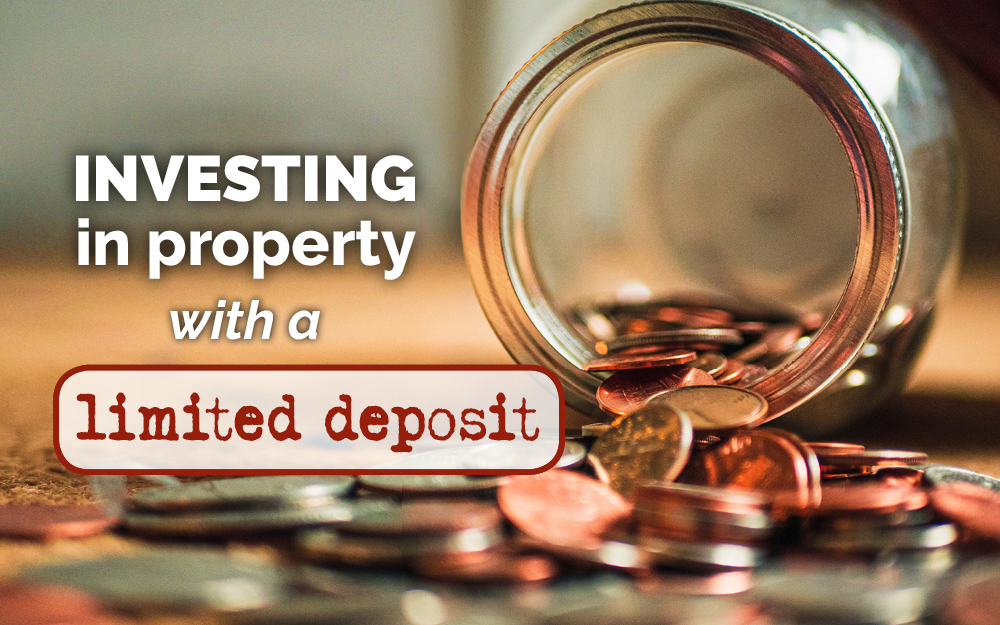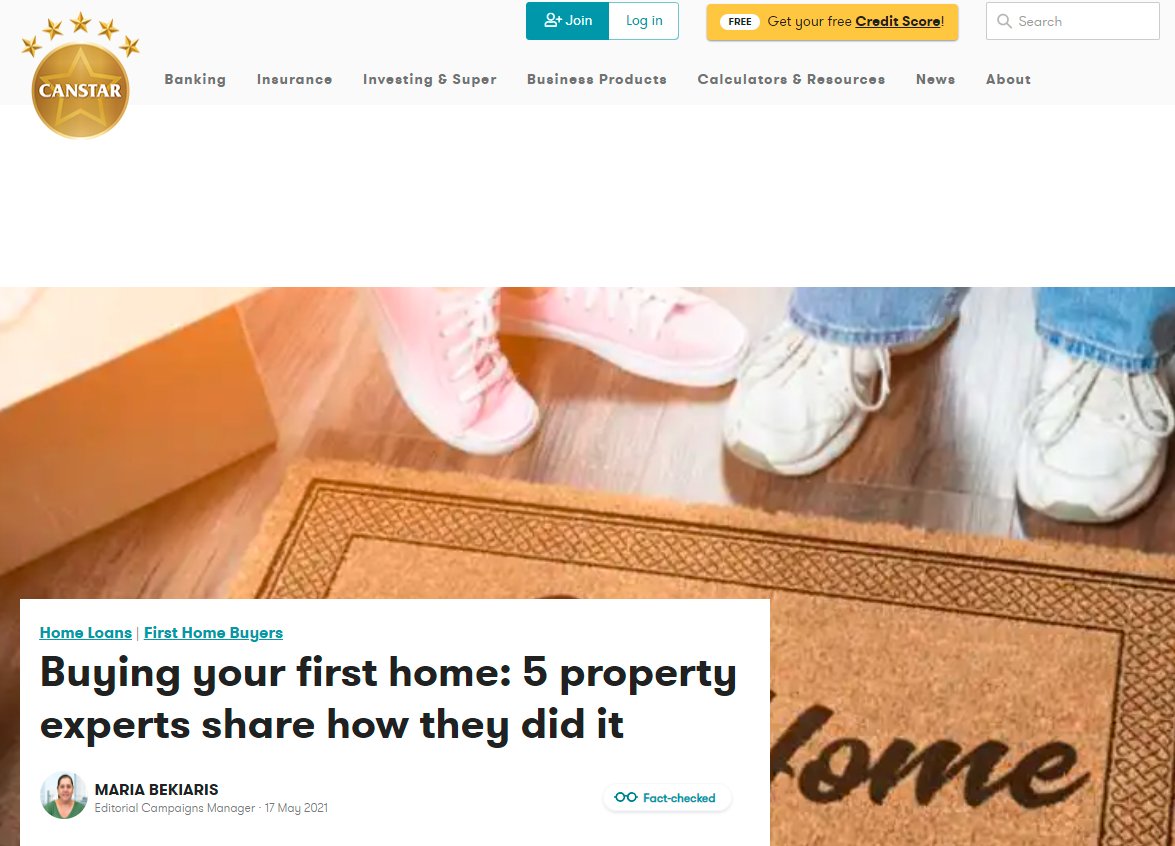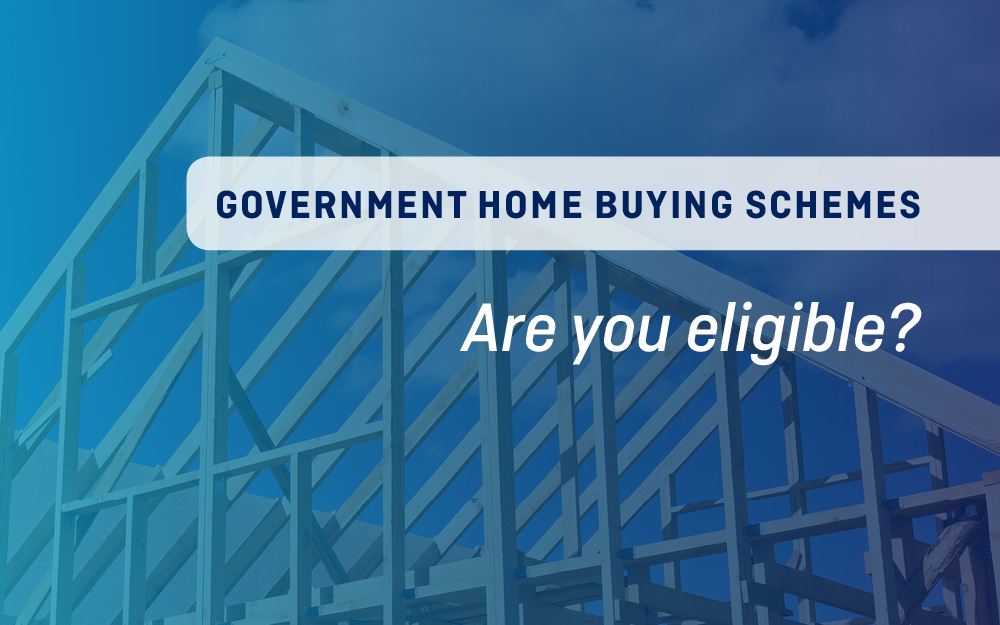ACT’s Professional Advantage: Save $70,000+ in Australia’s Most Stable Market
The Australian Capital Territory offers first home buyers a unique combination of Australia's most stable employment market and strategic...

The Australian property market is a national obsession. It’s a popular topic around the barbeque, with bricks and mortar remaining one of our best loved investments. It’s little wonder, given the potential for providing a solid ongoing rental income and recent rises in property prices providing some optimism as to capital appreciation when it comes time to sell.
However, the rising prices that make property investment seem so attractive also mean it can be increasingly difficult to raise the deposit needed to invest. So let’s look at some ways to buy an investment property with a small deposit or even none at all.
If you already have a property, you can use the equity you have in it towards a deposit for another property.
Equity can be calculated by finding the difference between the current value of your property and the amount you still owe on it. Lenders have a basic formula they use to work out how much of your equity they will allow you to access. The maximum lending value is usually 80% of the existing property’s value. Say you have a property valued at $1,000,000 and you still owe $300,000 on it. Your equity is $700,000 and the 80 per cent borrowing rule means you can only draw on a maximum of $500,000.
This formula is a guide only and lenders look at many other factors when deciding to re-mortgage a property for investment purposes. It’s always best to talk to us about your particular circumstances and your ability to service the loan.
Many lenders offer low deposit loans for investment properties. Lenders take into account the expected rental returns and your own repayment potential when calculating how much they will lend. But remember, if your deposit is under 20%, you will likely have to pay Lenders’ Mortgage Insurance (LMI) on top of your repayments.
If your family is in a position to help, you could consider a family guarantee loan.
This is a situation where a relative (preferably a parent, grandparent or sibling), provides additional security for your home loan. Most commonly, equity in your guarantor’s property is used as security for part of your loan. While no money changes hands, this will allow you to top up your deposit, and avoid paying LMI fees.
These arrangements should not be entered into lightly. In the unfortunate event you are unable to make your repayments, your guarantor will have the responsibility of paying back their secured portion of the loan, even if this means selling their home. It is important to demonstrate that you understand the risks you’re asking your family to take for you. We can help explain the obligations for both you and your potential guarantor.
If you don’t have enough to buy a property on your own, why not invest with a friend or family member? Combining your savings will increase the deposit you can put down. This could mean avoiding LMI costs or buying a more expensive property.
There’s also the benefit of splitting repayments, repairs and fees. Of course, splitting costs also means splitting profits and any tax deductions.
We strongly advise getting a detailed agreement drawn up if you go down this route to ensure the partnership and obligations are clear from the onset.
If you have a self-managed super fund (SMSF), you may consider buying the investment property through your fund. Keep in mind there are very strict rules you need to be aware of.
Essentially, the only purpose of the property is to provide retirement benefits to the SMSF members. The property cannot be acquired from a fund member or a close associate, and fund member or their associates cannot live in or rent the property.
The rules around commercial premises, are slightly different. In all cases, you need to check that you’re fully complying with SMSF law before you buy. The government’s Moneysmart website has useful information.
Examining your financing options can seem daunting. So please get in touch if you’d like to talk through which might suit your circumstances and investment goals.

For those who enjoy the company of a furry friend, 2020 was the year of the pet. Animal shelters and breeders reported a surge in interest in pet ownership as many of us found we suddenly had enough time on our hands to welcome a pet into the family.
In fact, between 2 March and 19 April last year, PetRescue saw 12,534 adoptions which was more than double the usual amount.i
There has also been an increase in the amount we are spending on pet products and care. As a nation, we currently spend $12.2 billion a year on pet-related products and services – up 42% since 2013.ii
The costs are not unsubstantial, the average pet owner will fork out between $3,000 and $6,000 in the first year and then around $1,000 every year after that.iii That sounds like a lot, until you start writing it all down. The first cost is actually purchasing or paying the adoption fee for the pet. Then there’s microchipping, council rego, multiple vet costs, accessories, and training.
Many people only consider food when planning their ongoing pet budget, but in truth, it can be just a small portion of the annual bill. Ongoing costs can include things like food, litter, treats, grooming, walking and boarding when you go away on holiday.
While the kind of pets we own encompasses a full menagerie of birds, fish, reptiles, rabbits, and rodents, our most popular pets are predictably dogs and cats. Almost two in five of us owns a dog, with around three in 10 households having a cat as a pet.iv
As well as being the most popular, dogs and cats are also the most expensive pets to keep (see table below).
| Pet | Cost p.a. |
|---|---|
| Dog | $1,627 |
| Cat | $1,029 |
| Rabbits | $600 |
| Birds | $115 |
| Fish | $50 |
Source: AMA Report, Pet Ownership in Australia
Keeping your pets in good health is an essential, but sometimes significant, expense. Many breeds have common health problems that may require surgery or medical intervention that can cost several thousand dollars to resolve. A hip replacement can cost $6,000. Canine cancer treatment may cost $10,000-$20,000, once diagnostics, surgery, chemotherapy and follow-up care are factored in.v
Growing uptake rates show Aussies are increasingly using pet insurance to mitigate unexpected vet bills.vi Insurance is available for accidents only, accidents and illness, or all vet bills including routine care. The monthly premium can vary depending on variables like breed and age.
If you decide that you don’t want to take up insurance it’s important to make sure that you can manage to cover unforeseen medical emergencies.
There are many ways you can keep costs down when it comes to pet ownership. Buying quality pet food in bulk can save on costs and keeping your pet healthy and within an appropriate weight range can save on vet bills down the track.
While it’s understandable to want to spoil your furry friend, you don’t need to buy fancy toys for them. Dogs love a disposable water bottle filled with kibble and cats are equally entertained by an empty box or piece for string as an expensive toy.
All in all, any loving pet owner would agree – having a pet is well worth the cost. They can provide unconditional love and affection, endless entertainment, life lessons for kids in taking on the responsibility of caring for an animal, as well as a great reason to exercise.
We all want to give our furry friends a full and happy life so it’s important to make some room in your budget for both the ongoing and unexpected costs of looking after the non-human members of the family.
i https://www.finder.com.au/2020-year-of-the-pet
ii https://www.abc.net.au/news/2017-06-27/australians-are-spending-up-big-on-pet-ownership/8651270
iii https://www.savings.com.au/savings-accounts/how-much-does-a-dog-or-cat-cost
iv https://kb.rspca.org.au/knowledge-base/how-many-pets-are-there-in-australia/
v http://www.smh.com.au/environment/animals/top-treatment-for-pet-patients-20120913-25uwe.html
vi http://www.ibisworld.com.au/industry/default.aspx?indid=623

“I had a miserly $45,000, and after stamp duty was taken from this amount, I was left with a 5% deposit for a $425,000 purchase” Jane Slack-Smith
Canstar asked me and 4 other property experts, to share how we got on the property ladder and share what we learned from our experiences Here’s what we had to say:
Click here to read the article

After a sizzling hot start to 2021, when rising home prices were clocked at their fastest pace in 32 years, the Australian residential property market is heading into winter still on the boil.
Up until the end of May, housing markets continued to surge with CoreLogic’s national Home Value Index up 2.2 per cent over the month.i While the May result was stronger than April’s 1.8 per cent rise, it was still weaker than March when dwelling values made their biggest monthly move since October 1988 at 2.8 per cent.
Prices across every residential market – city and country – are rising. House and unit values in each capital city were up more than 1 per cent over May and of the 334 statistical sub regions monitored by CoreLogic, 97 per cent had experienced positive price growth during the quarter. Although a post-pandemic escape to the country lead to soaring home prices throughout early 2021, the tide appears to be turning – albeit slightly. For the second time in three months, growth in capital city home values outpaced regional markets. The combined capital city figure was up 2.3 per cent for May against a 2 per cent rise across the combined regions.
All the right drivers are at play in the current market to keep the tide rising. Historically low interest rates, a healthy economy, extra household savings, and a desire to reevaluate one’s work-life balance in the wake of COVID-19, have all come together to create an ongoing demand for housing.
Couple these factors with a lower than average advertised supply of housing, and the perfect storm is perpetuating an upwards pressure on prices.
Despite strong activity from first-home buyers late last year and into early this year, the end of HomeBuilder in March and rising affordability constraints have seen this buyer type be overtaken by home buyers already on the property ladder and now investors.
Australian Bureau of Statistics data showed that February and March recorded a 4.8 per cent reduction in first-home buyer borrowing, while investor financing was up 17.7 per cent in March compared with January. As a result, the share of financing secured by investors sat at 25.9 per cent, up from 23.1 per cent in January.ii
Australia’s most populous city, and the rest of NSW, have been home to some of the most extraordinary property price growth throughout the start of 2021. From January to April 2021, Sydney dwelling values have risen 9.3 per cent according to CoreLogic data, and across regional NSW dwelling values were up 9 per cent. Sydney’s median dwelling value is now just over $970,000.
Although extended lockdowns impacted Melbourne’s inner city unit market, prior to the most recent spike in Victorian cases, the market had bounced back strongly. Dwelling values for the capital were up 5.5 per cent for the quarter to a median of $740,562.
Dwelling values across Queensland are currently 13.7 per cent above their previous record high, partly fuelled by interstate migration to the Sunshine State. Brisbane itself saw a 6.2 per cent increase in dwelling values for the last quarter, taking the current median to $574,572.
By April, Western Australia had marked its the eighth consecutive month of growth in state dwelling values, and the 19th month in a row of rental increases. For Perth there was a 3.8 per cent rise in dwelling values during the past quarter so that the median reached $521,688.
Throughout the start of 2021, ACT’s housing market surged to the point of 20 consecutive months of dwelling values reaching record highs, placing the market value 19.1 per cent higher than the previous high in April 2019. After a quarterly rise of 6.5 per cent, Canberra now has a median dwelling value of $746,573.
To find out how you can make the most of 2021’s property market conditions, contact us today.
ii https://www.abs.gov.au/statistics/economy/finance/lending-indicators/latest-release
Note: all figures in the city snapshots are sourced from: CoreLogic’s national Home Value Index (June 2021)

There was some good news for first home buyers in the recent Federal Budget. It included a variety of new schemes and extensions to existing schemes, all aimed at helping more people realise their dream of home ownership.
Here’s an overview of the assistance being made available and who can benefit.
On 1 July 2021, the New Home Guarantee, previously referred to as the First Home Loan Deposit Scheme, will release 10,000 places for first home buyers wanting to build a new home or buy a newly built home.
Any home buyer with less than a 20 per cent deposit normally needs to pay lenders mortgage insurance, which can represent a large additional cost at purchase or potentially add to your repayments if it forms part of your loan. With the New Home Guarantee, first home buyers can buy their home with a deposit of as little as 5 per cent without having to pay lenders mortgage insurance. This is because the government will guarantee up to 15 percent of the value of the property.
In order to be eligible for the New Home Guarantee scheme, you and/or your spouse or de facto partner, will need to be an Australian resident over the age of 18. There are several criteria you will need to satisfy including an income test, a prior ownership test, meet the owner occupier requirement and have a minimum 5 per cent deposit.i
The new Family Home Guarantee is providing mortgage guarantees for single parents with dependants, who want to build a new home or buy an existing one.
The scheme allows single parents to buy a home with a deposit of as low as 2 per cent, and is open to single parents who are first home buyers or have been owner-occupiers before. To be eligible your annual income must be below $125,000. It is flagged to run for four years with the first 10,000 places opening on 1 July 2021.ii
The Family Home Guarantee works in a similar way to the New Home Guarantee scheme and is an exciting initiative for single parents who are struggling to save a deposit.
The Government is extending and increasing the First Home Super Saver Scheme (FHSSS) to help even more people buy their own home.
From 1 July 2022, you are able to release up to $50,000 from your superannuation to put towards a deposit for your first home. If two people are saving under the scheme, that’s up to $100,000 you could add to your deposit. This is an increase from the $30,000 maximum per person previously available.iii
The great thing about this scheme is that you can benefit from the tax savings that apply to voluntary super contributions and the income those investments earn while saving for your first home deposit.
The changes apply retrospectively to valid FHSS release requests and contracts entered into on or after 1 July 2018. Please don’t hesitate to give us a call if you are interested in applying for the scheme or would like to find out more.
If you applied for a HomeBuilder grant but haven’t started construction yet, there’s good news for you too. The construction deadline has been extended from six to 18 months for all applications, which includes contracts signed between 4 June 2020 and 31 March 2021.iv
While having so many schemes on offer is great, it’s easy to feel confused about which you qualify for.
If you’d like to discuss whether any of these schemes may be appropriate for your circumstances and how to apply, then please get in touch. It’s never too early or late to start planning your path to home ownership.
i https://www.nhfic.gov.au/what-we-do/fhlds/eligibility/
iv https://treasury.gov.au/coronavirus/homebuilder
Please note that some of these schemes are not yet legislated at the time of publication.
The Australian Capital Territory offers first home buyers a unique combination of Australia's most stable employment market and strategic...
The Northern Territory offers Australian first home buyers the most generous grant support in the nation, with the HomeGrown Territory...